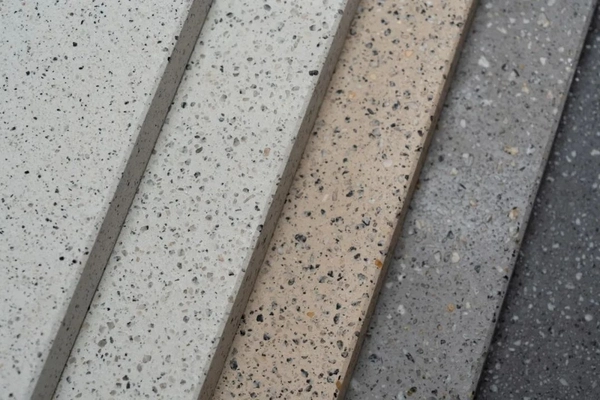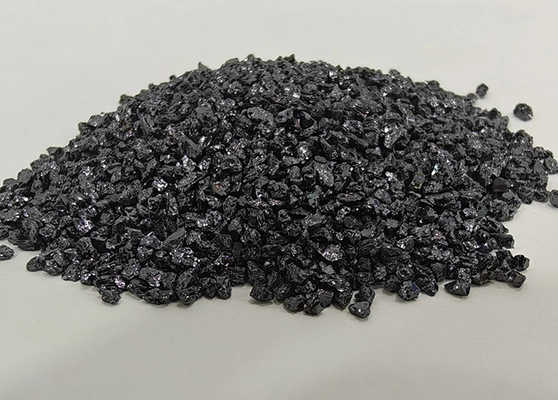Quick Answer: Stone sandblasting is a surface treatment technique that uses abrasives such as aluminum oxide, garnet, or silicon carbide to etch, clean, or texture stone. Proper abrasive selection ensures surface quality, efficiency, and environmental compliance. Recycling methods like mechanical separation and magnetic purification allow abrasives to be reused, reducing waste and conserving resources.

Table of Contents
- What is Stone Sandblasting?
- Why Abrasive Selection Matters
- Common Abrasives Used
- Factors in Choosing Abrasives
- Guidelines for Selection
- Abrasive Properties & Parameters
- Preparation Routes & Morphologies
- Selection Checklist
- Comparisons of Different Abrasives
- Recycling Methods
- FAQ
- References
What is Stone Sandblasting?
Stone sandblasting involves using compressed air or water to accelerate abrasive particles toward a stone surface. It is commonly applied to materials like granite, marble, and limestone to achieve cleaning, texturing, or decorative effects. This method has been widely adopted in construction, monument making, and surface engineering.
Why Abrasive Selection Matters
The type of abrasive directly influences the surface finish, durability of the stone, and overall efficiency of the process. An incorrect choice may lead to surface damage, excessive dust, or shortened equipment lifespan. Correct selection also supports sustainable use of materials and compliance with modern environmental standards.
Common Abrasives Used
- Silica Sand: Historically common, but less favored today due to dust hazards.
- Aluminum Oxide (Al2O3): Hard, durable, effective for granite and other hard stones.
- Garnet: Popular for its recyclability and relatively low dust production.
- Glass Beads: Provide gentle cleaning for marble and limestone surfaces.
- Silicon Carbide (SiC): Extremely sharp, highly efficient, ideal for aggressive cutting or texturing.
Factors in Choosing Abrasives
When selecting an abrasive, manufacturers typically evaluate:
- Hardness of the stone (Mohs scale)
- Desired surface finish (smooth polish vs deep texture)
- Particle size and shape
- Environmental and safety considerations
- Potential for recycling and reuse
Guidelines for Selection
- Match abrasive hardness to be slightly above the stone’s hardness.
- Conduct small-scale tests on sample pieces before full production use.
- For softer stones like marble, choose mild abrasives such as glass beads or walnut shells.
- For dense stones like granite, select harder abrasives such as aluminum oxide or silicon carbide.
Abrasive Properties & Parameters
| Abrasive | Mohs Hardness | Density (g/cm³) | Shape | Recyclability |
|---|---|---|---|---|
| Aluminum Oxide | 9.0 | 3.9 | Blocky | Medium |
| Silicon Carbide (3C / 4H / 6H) | 9.2–9.5 | 3.2 | Angular | High |
| Garnet | 7.5–8.0 | 4.1 | Sub-angular | High |
| Glass Beads | 6.0 | 2.5 | Spherical | Low–Medium |
Preparation Routes & Morphologies
- Aluminum Oxide: Produced by electric arc fusion of bauxite.
- Silicon Carbide: Made using the Acheson process (quartz + petroleum coke). Different polytypes (3C, 4H, 6H) are used for abrasives and advanced ceramics.
- Garnet: Naturally mined, then crushed and purified.
- Glass Beads: Manufactured from recycled glass melted into spherical shapes.
Selection Checklist
- ✔ Confirm the stone type and its hardness
- ✔ Choose abrasive particle size based on desired texture
- ✔ Ensure material is safe and environmentally compliant
- ✔ Check recyclability for cost and resource savings
Comparisons of Different Abrasives
Granite / Quartzite: Best with Aluminum Oxide or Silicon Carbide.
Marble / Limestone: Better treated with Glass Beads or softer media.
Eco-friendly choice: Garnet, due to recyclability and reduced dust.
Recycling Methods
- Mechanical Separation: Screens and air classifiers remove dust and debris.
- Magnetic Separation: Effective for ferrous contaminants.
- Water Washing: Removes soluble impurities and fine dust.
- Centrifugal Separation: Improves recovery of fine abrasives.
Proper recycling reduces raw material consumption, minimizes landfill use, and promotes sustainable practices in manufacturing industries.
Frequently Asked Questions (FAQ)
What abrasives are most commonly used for stone sandblasting?
Aluminum oxide, silicon carbide, garnet, and glass beads are widely used depending on the stone type and desired finish.
Does abrasive size affect the surface finish?
Yes. Fine particles yield smoother finishes, while coarse particles produce deeper textures.
Can all abrasives be recycled?
No. Some, such as silica sand, degrade quickly. Materials like garnet and silicon carbide can be recycled multiple times.
Is sandblasting safe for all stones?
Not always. Softer stones like marble require mild abrasives to avoid damage, while harder stones like granite tolerate more aggressive blasting.
References
- ASM Handbook, Vol. 5: Surface Engineering (ASM International, 1994).
- ISO 11126-10:2017 – Non-metallic blast-cleaning abrasives.
- FEPA (Federation of European Producers of Abrasives) Grain Standards, 2023 Edition.
- U.S. OSHA 29 CFR 1910.94 – Ventilation requirements for abrasive blasting.
Request a Quote or Sample
Popular Products
Grünes Siliziumkarbid
View DetailsSchwarzes Siliziumkarbid
View Details